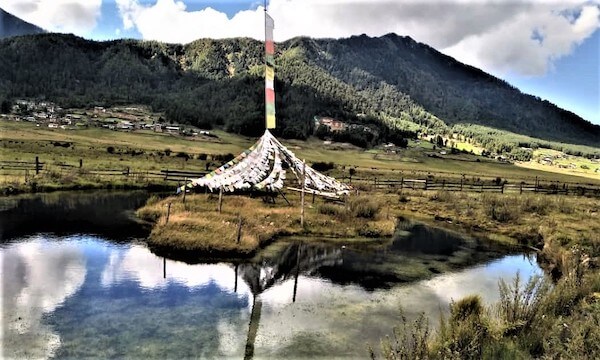 Natural Heritage: National Parks & Wildlife Sanctuaries of Bhutan
Natural Heritage: National Parks & Wildlife Sanctuaries of Bhutan
Nowhere in the Himalayas is the natural heritage more rich and varied than in Bhutan. In historical records, the Kingdom was called the 'Valley of Medicinal Herbs', a name that still applies to this day. About 72 per cent of the country's area is still under forest cover.
For centuries, Bhutanese have treasured the natural environment and have looked upon it as the source of all life. This traditional reverence for nature has delivered Bhutan into the 21st century with an environment still richly intact. The country wishes to continue living in harmony with nature and to pass on this rich heritage to its future generations.
Fortunately for Bhutan, maintaining a balanced natural ecosystem remains the central theme of its development process. The country's development policies disregard sacrificing its natural resource base for short term economic gains and are consistent with the central tenets of sustainable development, environmental conservation and cultural values.
In 1998, Bhutan was identified by Norman Myers as one of the ten bio-diversity hot spots in the world. It has been identified as the centre of 221 global endemic bird areas. The country signed the Convention on Biological Diversity and United Nations Framework Convention on Climate Change in Rio de Janeiro in 1992. These conventions were ratified in 1995 at the 73rd session of the National Assembly. The Royal Government of Bhutan has also made a national commitment to uphold its obligation to future generations by charting a path of development called the 'Middle Path': this is the development that upholds both environmental and cultural preservation as an integral part of all projects and schemes.
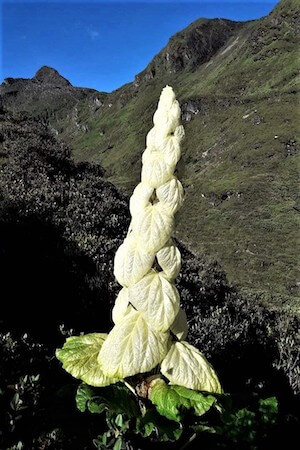 Flora
Flora
An astonishing array of plants grow in Bhutan: over 5400 species, including 300 species of medicinal plants and over 50 species of rhododendrons. Of the more than 600 species of orchid, most are commonly found up to 2,100m, although some hardy species thrive even above 3,700m.
Tropical evergreen forests growing below 800m are repositories of unique bio-diversity. The next vegetation zone is the subtropical grasslands and forests found between 900m and 1,800m. The tree rhododendron is found in this zone, along with a forest of oak, walnut and sal, and numerous varieties of orchid.
A temperate zone is a region of great diversity, largely influenced by elevation. The tropical vegetation of the lower zones gives way to dark forests of oak, birch, maple, magnolia and laurel. Above 2,400m altitude is the home of spruce, yew, and weeping cypress and higher still growing up to the tree line is the east Himalayan fir. Between the tree line and the snow line at about 5,500m are low shrubs, rhododendrons, Himalayan grasses and flowering herbs.
Bhutan's national flower, Blue Poppy grows above the tree line 3,500 - 4,500m elevation and can be found atop some high passes from the far eastern parts of the country all the way across to the west.
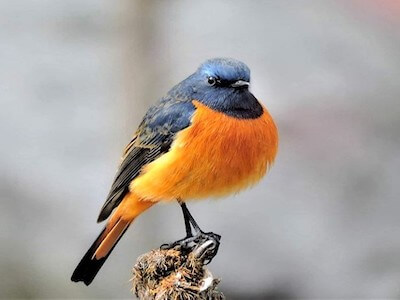 Fauna
Fauna
Because of its unique setting and relatively un-exploited environment, Bhutan probably possesses the greatest biological diversity of any country of its size in Asia. It certainly contains some of the best remaining representatives of habitat types found in the Himalayas.
Along its southern border, the narrow tropical and subtropical belt supports the Asiatic elephant, greater one-horned rhinoceros, gaur, wild water buffalo, hog deer, tiger, clouded leopard, hornbill, trogon and other mammals and birds characteristic of Indomalayan species. Only 150 kilometres to the north, high Himalayan fauna include the blue sheep, takin, musk deer, snow leopard, wolf and other species characteristic of the Palearctic realm.
So far as 770 species of birds have been recorded in Bhutan which reflects the Kingdom's wide range of agro-ecological environments - from subtropical to alpine and its location at the northern edge of the Zoogeographical oriental region and the permeable and fluid border with China. Also, the country is famous for its overwintering populations (about 350 birds) of the vulnerable black-necked crane in the valleys of Phobjikha, Bomdeling and Gyetsa.
National Parks & Protected Areas
Bhutan's history of isolation and policy of sustainable development provides decision-makers with a unique opportunity to conserve the country's natural and cultural heritage. As a first step in conserving its natural heritage, Bhutan has established a system of nine protected areas. The system sets aside approximately 26% of the country's total land area in national parks, nature reserves, wildlife sanctuaries and conservation areas.
Kingdom established its national park system to protect important ecosystems, and they have not been developed as tourist attractions. In many cases, people even won't be aware that they are entering or leaving a national park or wildlife sanctuary.
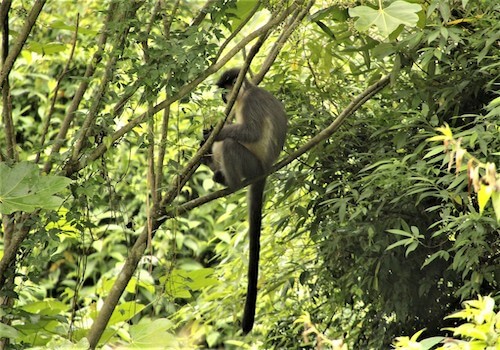 Jigme Dorji National Park
Jigme Dorji National Park
It is the largest protected area in the country, encompassing an area of 4,349 sq. km, covering the western parts of Paro, Thimphu and Punakha and almost the entire area of the Gasa district. The park is the habitat of several endangered species including takin, blue sheep, snow leopard, musk deer, Himalayan black bear and red panda.
Royal Manas National Park
This 1,023 sq km park in south-central Bhutan adjoins the Black Mountain National Park to the north and India's Manas National Park and Manas Tiger reserve to the south. It is home to rhinoceros, buffalo, tiger, leopard, gaur, bear, elephant, wild dog, pygmy hog, hispid hare and several species of deer.
Black Mountain National Park
This reserve with an area of 1,723 sq km protects the range of hills that separates eastern and western Bhutan. Its plant life includes a wide range of broadleaf species, conifers and alpine pastures. Animal life includes tiger, Himalayan black bear, leopard, red panda, goral, serow, sambar, wild pig and golden langur. The Phobjikha valley, wintering place of black-necked crane, is included in this park.
Phipsoo Wildlife Sanctuary
This 278 sq km area is on the southern border of Bhutan, about 50 km east of Phuentsholing and protects sal forests of the country. Several protected species thrive in the sanctuary including axis deer, chital, elephant, gaur, tiger, golden langur and hornbill.
Thrumshing la National Park
The 768 sq km Thrumshing la National Park lies between Bumthang and Mongar and protects temperate forests of fir and chir pine. It is known for its scenic views, dense forests and alpine meadows. The presence of threatened species viz. rufous necked hornbill, Satyra tragopan, Ward's trogon, chestnut breasted partridge is a noteworthy feature of this reserve.
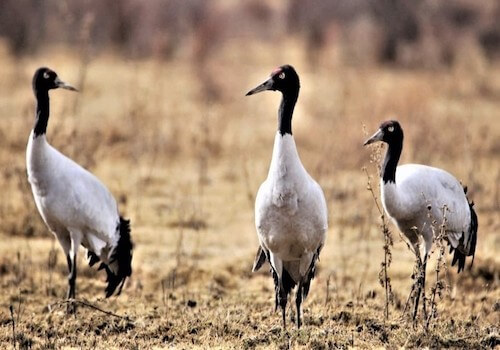 Kulong Chhu Wildlife Sanctuary
Kulong Chhu Wildlife Sanctuary
With an area of 1,300 sq km, this reserve is a large area of alpine tundra. The sanctuary protects the sambar and adjoins the Bomdeling conservation area, which is an important roosting place of black-necked cranes.
Sakten Wildlife Sanctuary
It is in the easternmost part of the country protecting 650 sq km temperate forests of eastern blue pine and rhododendron. This sanctuary is established to protect the habitat of yeti.
Khaling Wildlife Sanctuary
Situated in far south-eastern Bhutan with an area of 273 sq km this sanctuary protects wild elephants, gaur, pygmy hog, hispid hare and other tropical wildlife.
Toorsa Nature Reserve
It is in the western part of the Haa district where the Toorsa river enters from Tibet. This 644 sq km reserve was established to protect the temperate forests of far west Bhutan.